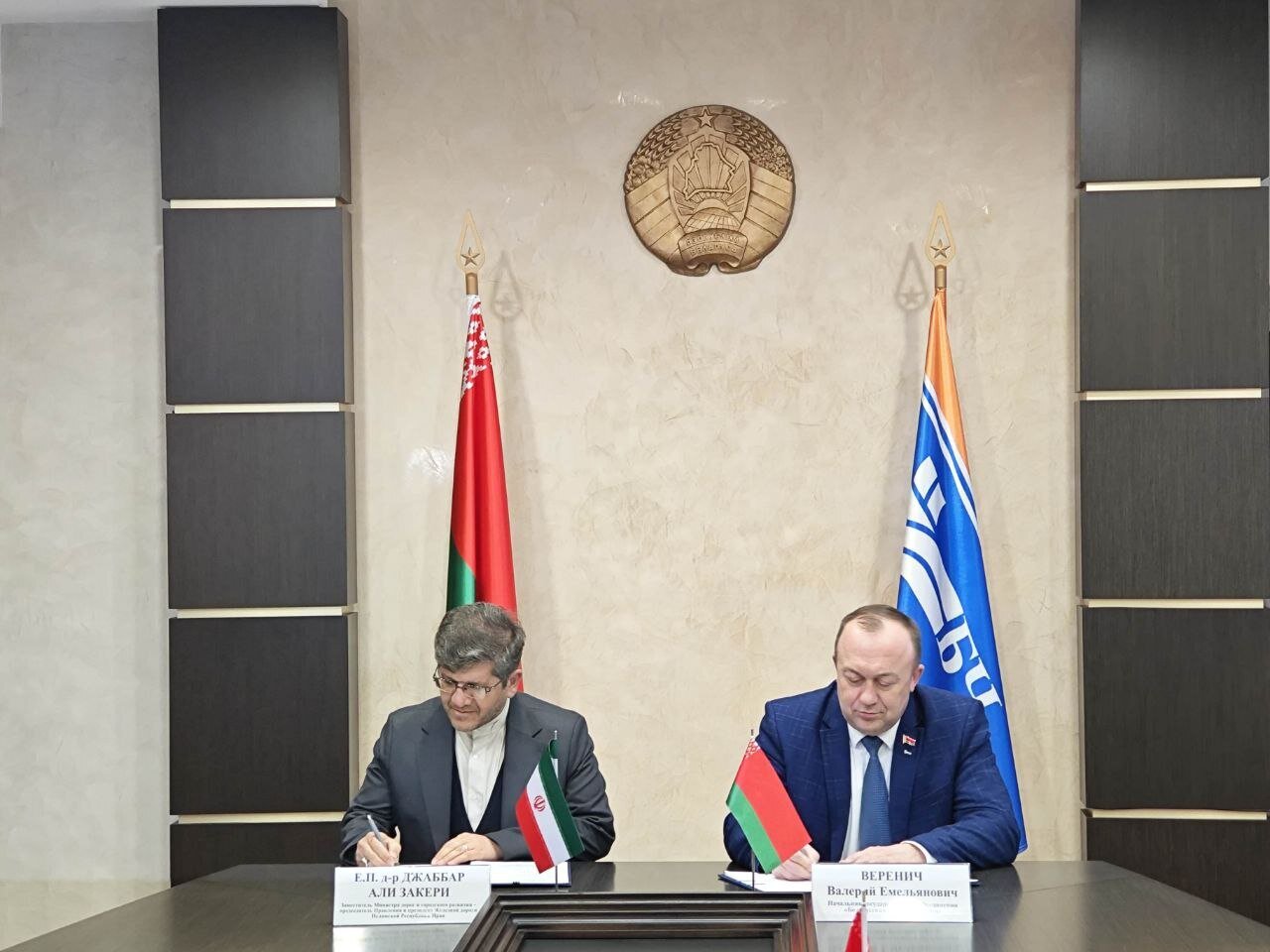Iran, Belarus sign rail pact to boost north-south transit

TEHRAN - Iran and Belarus have signed a cooperation agreement to strengthen international rail transport and expand the International North-South Transit Corridor (INSTC), according to Iran’s state broadcaster.
Jabarali Zakeri, Deputy Transport Minister and head of the Islamic Republic of Iran Railways (known as RAI), and Valery Verenich, head of Belarusian Railways, signed the memorandum of understanding, highlighting plans to deepen bilateral cooperation on the Belarus–Iran trade route.
The agreement aims to boost rail-based exports and imports between the two countries and expand transit capacity along the corridor.
The two sides also committed to working with the railways of Russia, Kazakhstan, Turkmenistan, and Azerbaijan to facilitate freight movement via the INSTC.
Key provisions of the agreement include launching regular, cost-effective freight train services between Iran and Belarus, engaging traders and cargo owners to increase freight volumes, optimizing transportation tariffs to make rail shipments along the Belarus–Iran route more competitive, and developing rail infrastructure to enhance cargo handling capacity along the corridor.
The International North-South Transport Corridor is a multi-modal network of ship, rail, and road routes that stretches over 7,200 kilometers, connecting India, Iran, and Russia, and extending toward Northern and Western Europe via the Caucasus and Central Asia. The corridor is designed to offer a faster, cheaper alternative to the traditional maritime route via the Suez Canal.
INSTC significantly reduces transit time between South Asia and Europe—from around 40 days to approximately 20 days—while lowering transportation costs by an estimated 30 percent. Iran plays a central role in the corridor, serving as a critical land bridge linking the Persian Gulf to the Caspian Sea and onward to Russia and Europe.
The recent Iran-Belarus agreement underscores growing regional interest in developing the INSTC as a strategic trade route amid shifting global logistics patterns and geopolitical reconfigurations.
EF/MA
Leave a Comment